With their dramatic colouring and elegant posture, flamingos lend themselves well to being very photogenic subjects. But Contreras Koob’s intimate images and depth of understanding of the birds and their lives offers a fascinating glimpse into the little-seen world of these most striking of birds.
With breathtaking detail, the book takes us on a journey that follows the lives and lifecycle of the Caribbean flamingo, including insights into their lives, behaviour, and the wetland habitats of the Yucatán in which they dwell.
About Claudio Contreras Koob and Martha A. Salazar
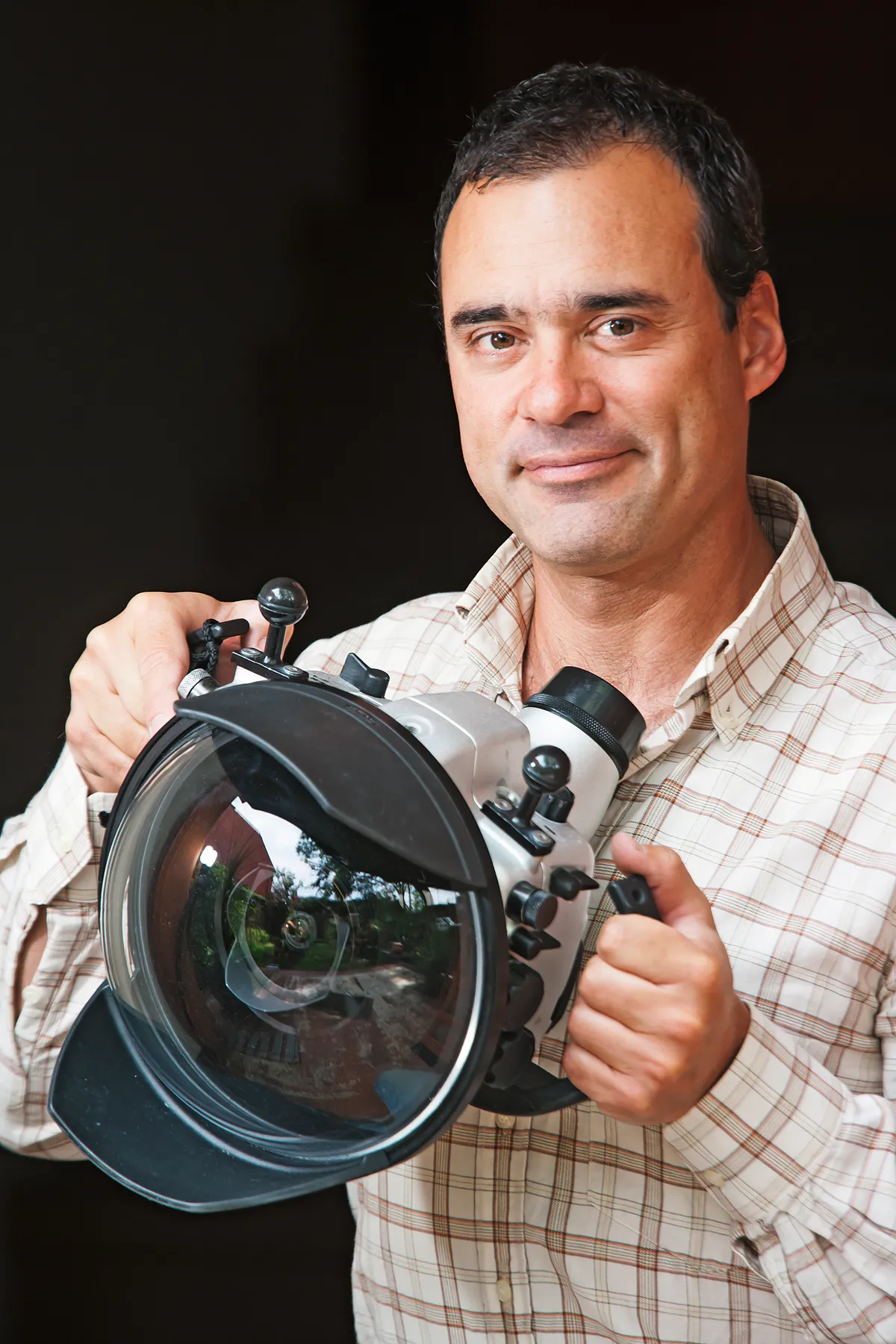
Claudio Contreras Koob is a multi-award winning photographer and a member of the International League of Conservation Photographers. Prior to his photography career, which spans over two decades, he studied biology at the National Autonomous University of Mexico. His most recent photographic expedition has been spent in Socorro Island in Mexico, where he has documented many endemic and endangered species.

Martha A. Salazar is co-author of Flamingo. She has worked as the editor of several natural history books, and has authored several children's books. She currently works for an initiative that works on projects relating to the natural environment.
About Flamingo
Flamingo is the first photo book to exclusively cover these fascinating birds. This beautiful book showcases the beauty of flamingos, from incredible close-up detail, to panoramic images that show the scale of the colonies against the wild backdrop of Ría Lagartos river delta on the Yucatán Peninsula.
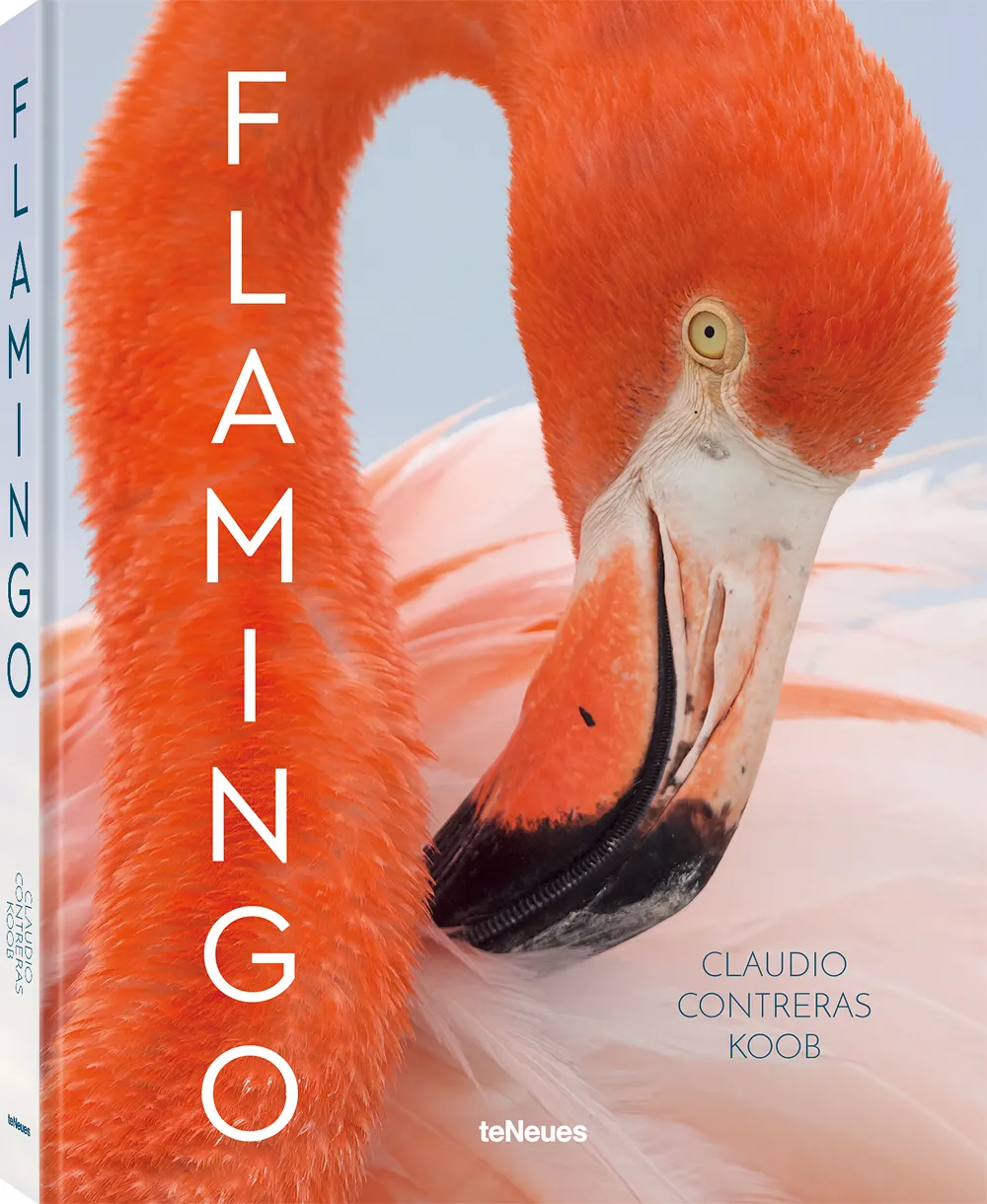
None of these shots would have been possible without the knowledge and patience of Contreras Koob, who spent more than 10 years building the trust of the flamingo colony in order to get close enough to photograph them at the different stages of their lifecycle. The resulting images are an accurate portrayal of flamingos behaving naturally and undisturbed in the wild.
Playing with colour, light, form and movement, Contreras Koob’s images capture small and intimate moments in the lives of these special birds, sometimes amusing, sometimes endearing, and always beautiful.
To view the images as a slideshow, click on the arrows in the top right-hand corner of the photos below.
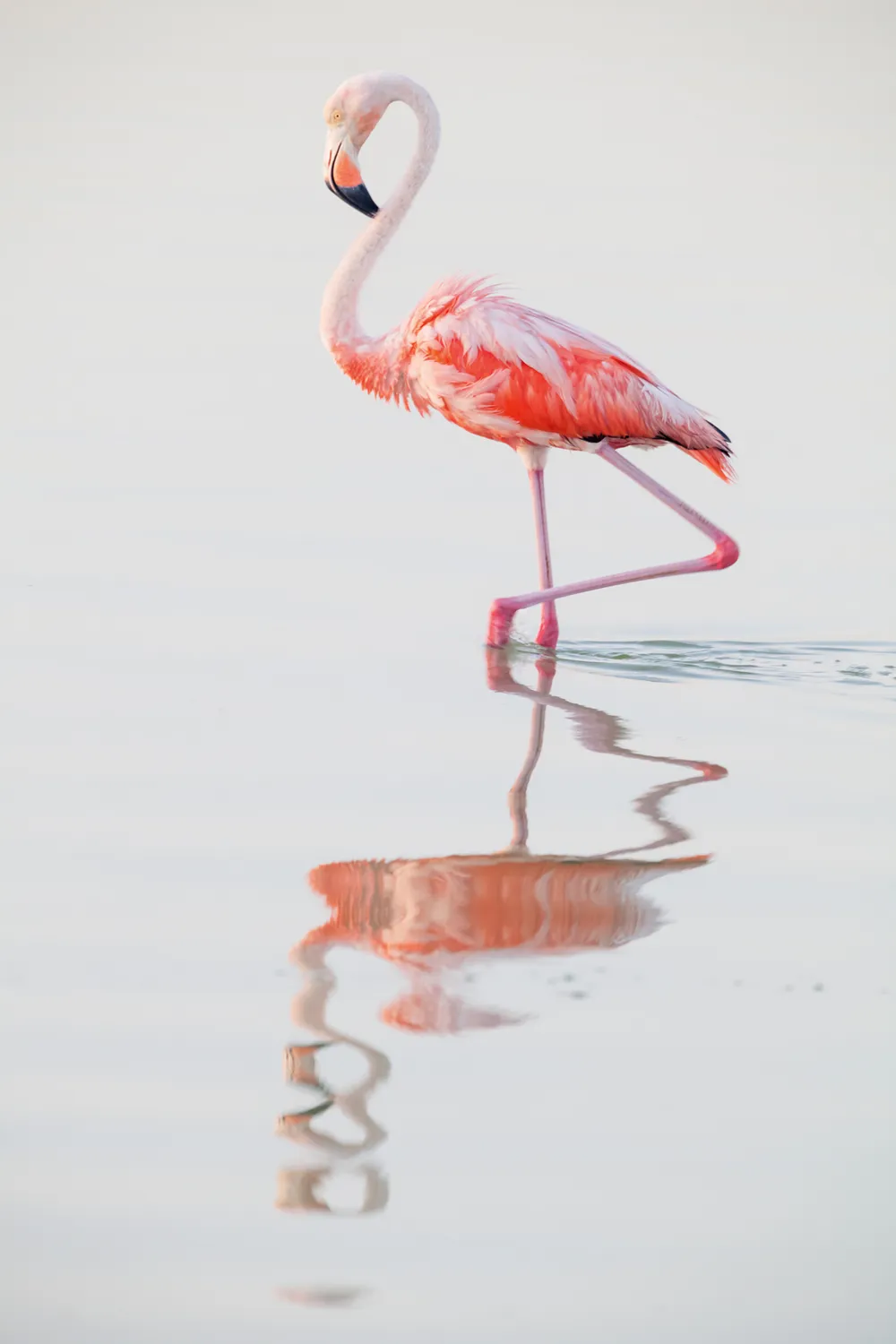
Claudio Contreras Koob began to build his photo portfolio of flamingos in his home country of Mexico more than 10 years ago.
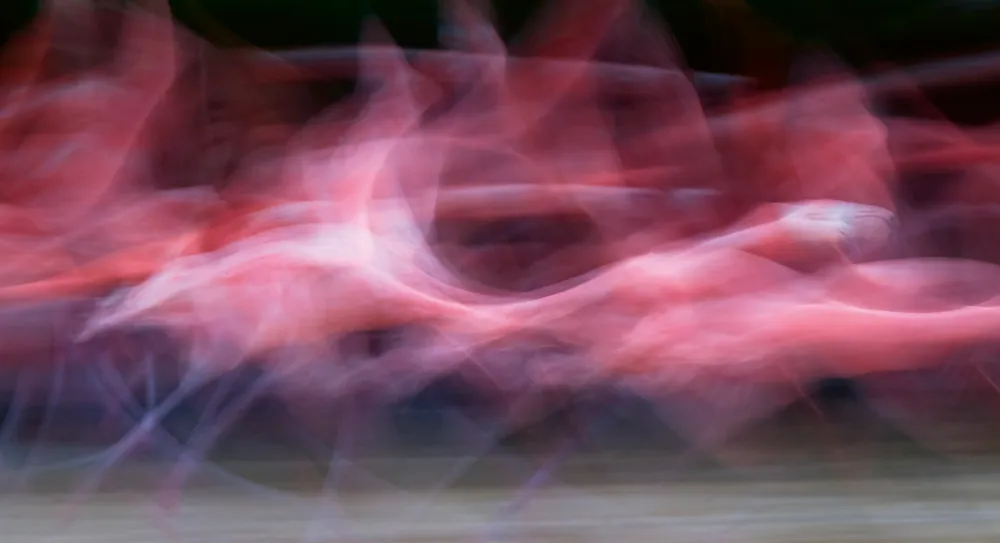
The photographs taken by Contreras Koob are a love letter to this unique bird that combines in-depth expertise with an artistic aesthetic. Here, the birds are about to take off to fly to their roosting site at Ría Celestún Biosphere Reserve.
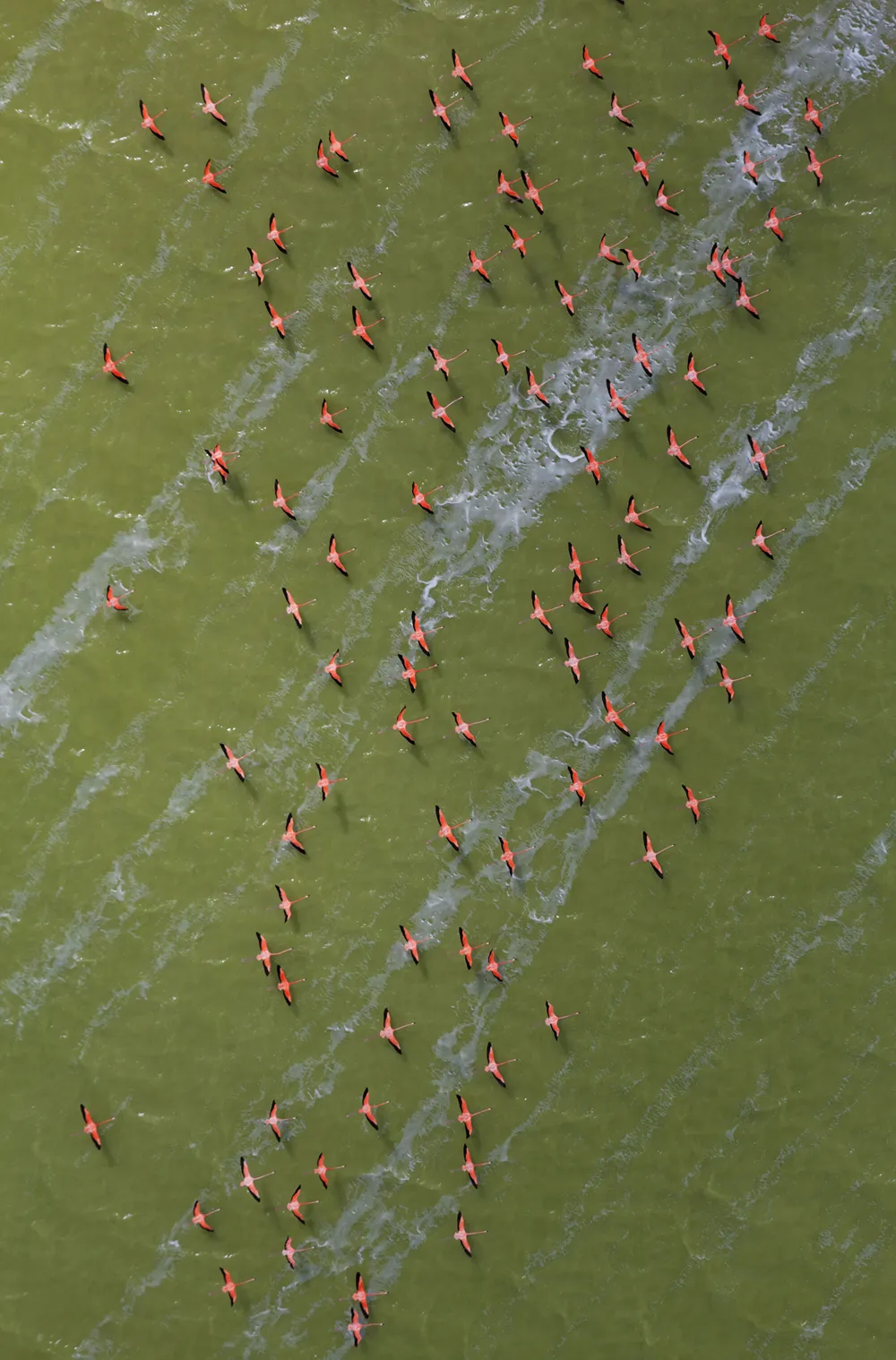
An aerial view showing flamingos on Mexico’s Yucatán Peninsula.
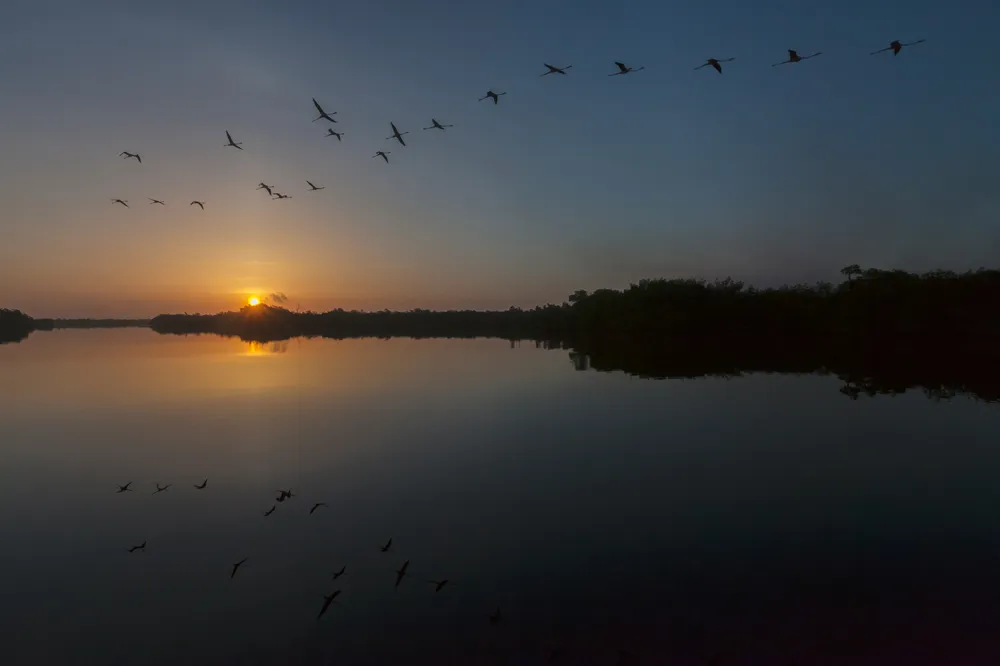
Although there are an enormous number of flamingos, the vastness of the wetlands in Yucatán makes it difficult to track them and predict where they will land.
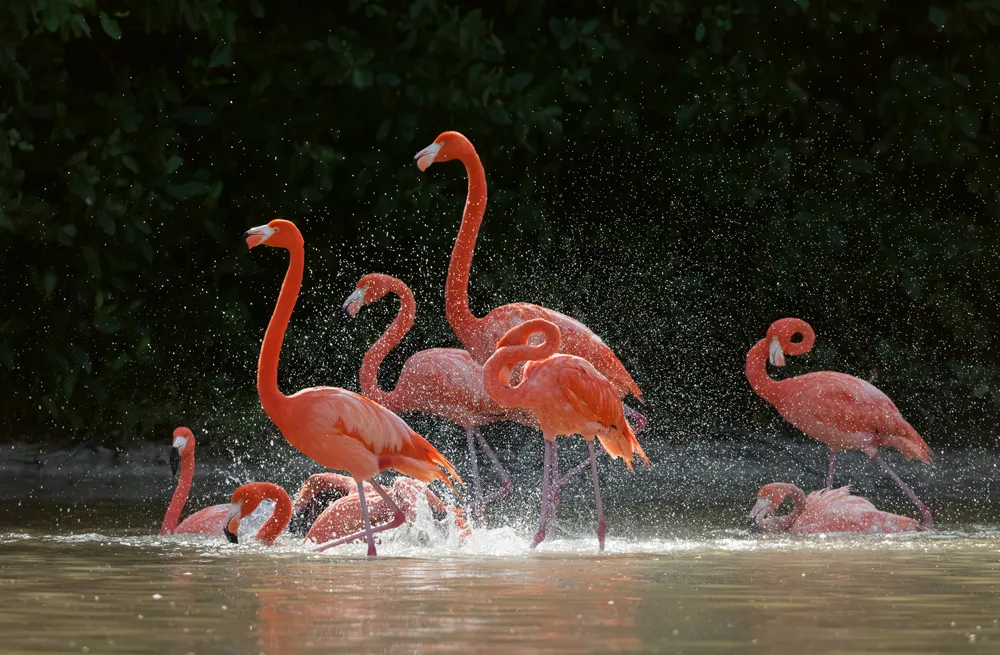
The Celestún estuary is a popular place for flamingos and is near the cenotes, underwater water reservoirs that inject fresh water into the middle of a lagoon as if from a spring.

To incubate their eggs, flamingos build nesting sites in their colonies. They consist of mud cones that must be constantly maintained so that rising water doesn't wash away the eggs.
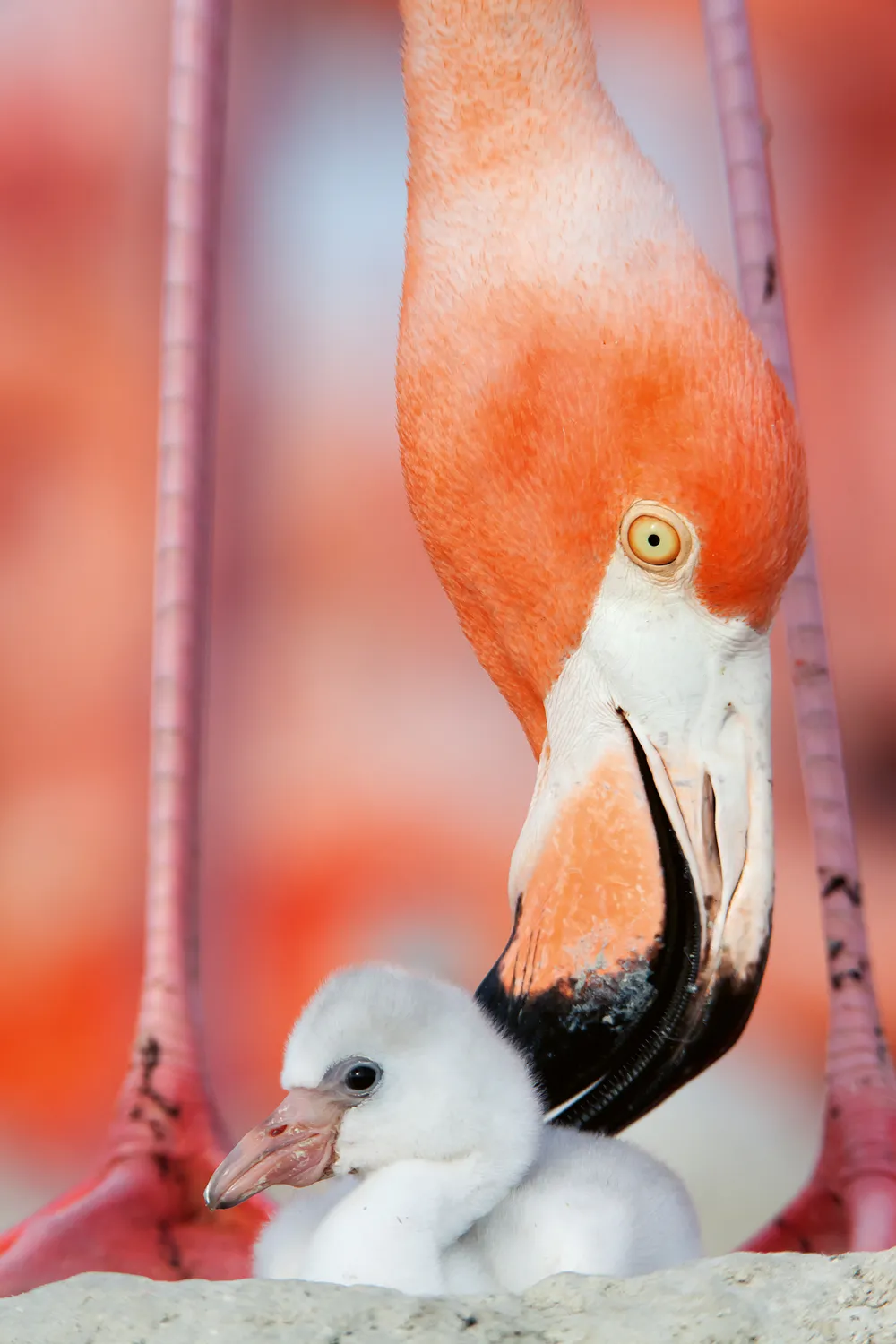
To keep his chick’s exploratory urges in check, the flamingo tries to restrain his newborn with his feet.
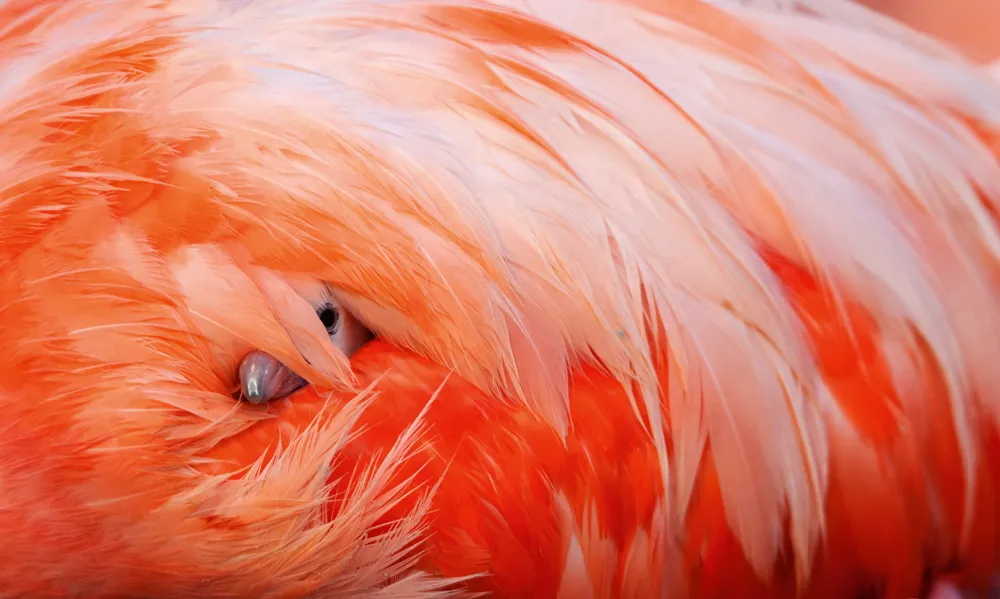
Soon, I see a little white head peek out of the orange plumage. I imagine that this little creature must think the whole planet is orange.

The fluid that feeds the nestling is called crop milk. Both adults produce this secretion in the upper part of the intestine.
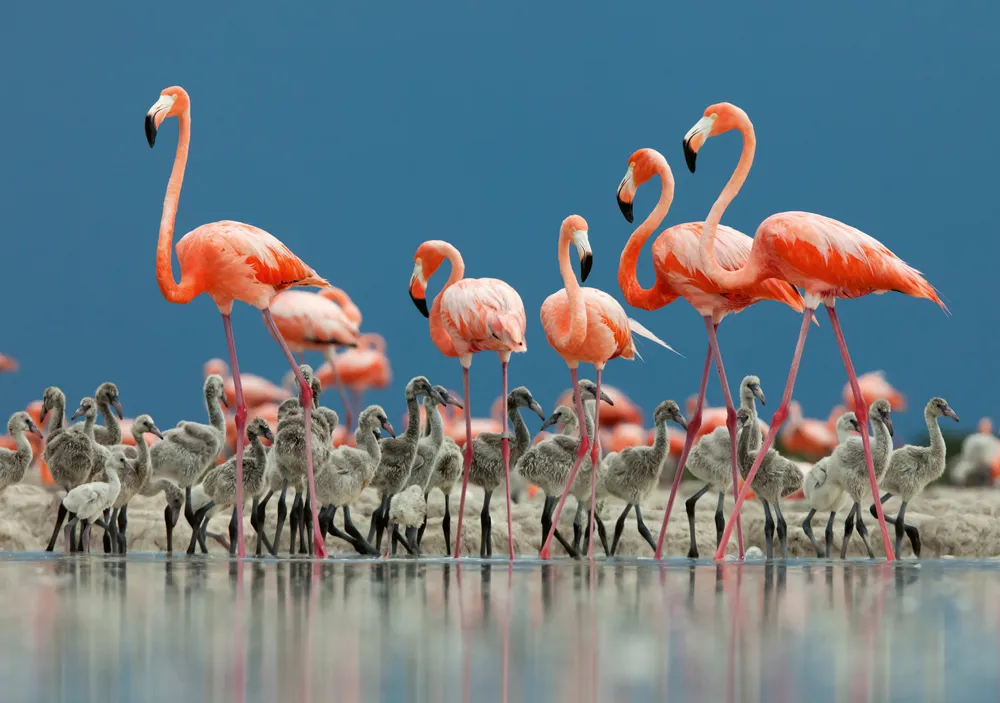
As they grow, the chicks begin to explore the surroundings of the colony, always under the watchful eye of several adult animals who look after them.




